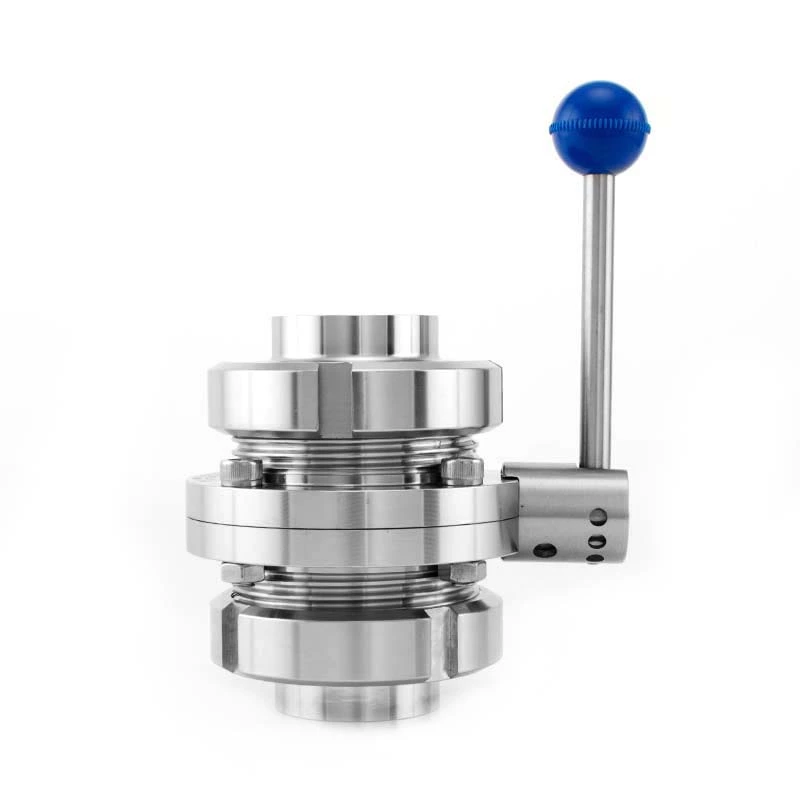What Are The Defects Of Sanitary Butterfly Valves?
When the Sanitary Butterfly Valve is working in the reverse flow state, the seal between the valve plate and the valve seat is pressed against the valve seat by the torque of the driving device. As the reverse medium pressure increases, when the unit positive pressure between the valve plate and the valve seat is less than the medium pressure, the deformation energy stored by the spring of the adjusting ring after being loaded compensates for the tight pressure of the valve plate and the valve seat sealing surface and plays an automatic compensation role. So do you know what are the defects of sanitary butterfly valves?
The defects of sanitary butterfly valves are introduced as follows:
1. When the sanitary butterfly valve is in the middle opening, the opening shape formed by the valve body and the front end of the butterfly plate is centered on the valve shaft, and the two sides form different states. The front end of the butterfly plate on one side moves in the direction of the water flow, and the other side moves in the reverse direction of the water flow. Therefore, the valve body and the valve plate on one side form a nozzle-shaped opening, and the other side is similar to a throttling hole-shaped opening. The nozzle side has a much faster flow rate than the throttling side.
2. Under normal use, the life of the sealing seat of the sanitary butterfly valve is 10-15 years for rubber and 70-85 years for metal. The relationship between the opening and flow rate of the sanitary butterfly valve is basically linear. If the sanitary butterfly valve is used to control the flow rate, its flow characteristics are also closely related to the flow resistance of the piping. If the valve diameter and form of the two pipelines are the same, but the pipeline loss coefficient is different, the flow rate of the valve will also be very different.
3. The operating torque of the sanitary butterfly valve is different due to the different opening and closing directions of the valve. Especially for large-diameter valves, the torque generated by the difference in upper and lower water heads due to the water depth cannot be ignored.
When the sanitary butterfly valve is working in the countercurrent state, the seal between the valve plate and the valve seat is pressed against the valve seat by the torque of the driving device. As the pressure of the reverse medium increases.
